Fitting a Countertop between walls
We’re remodeling a guest room to be a combined guest room/project room. We’ve put cabinets across one side, and now I need to put a countertop on top of them.
Our plan is to go with a laminate counter, for price and for smoothness, which is important for sewing.
I have a couple of questions.
1) The counterop is about 10′ long That means the countertop will need to be made from two pieces of plywood. How should I join them together? Also, should I use a single thickness, or two thicknesses? I’m leaning towards 3/4″ AC, though I might use two thicknesses of 1/2″ ACX.
2) Should I use plywood, or should I use particle board or MDF? I have to span a sitting space that’s about 2 feet across.
3) Any special way to support the counter across the sitting space? I’m planning on a cleat against the wall.
4) How do I get the countertop pieces to the right side. I’ve considered scribing and fitting each piece, but getting the overlap right seems tough. I’m also considering builidng a template out of 1/8″ hardboard, scribing to each wall, and then hot-glueing them together to make a full-size template.
5) Any tips on edge treatment? Does anybody have experience with the edging that color-matches laminates?
Thanks.
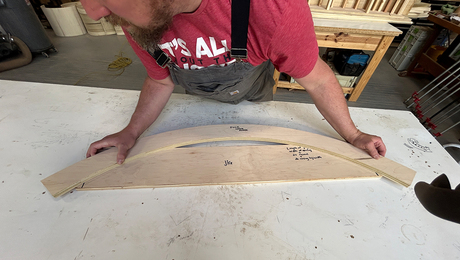
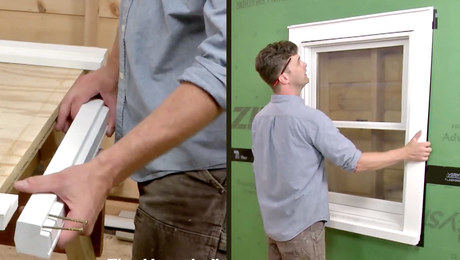


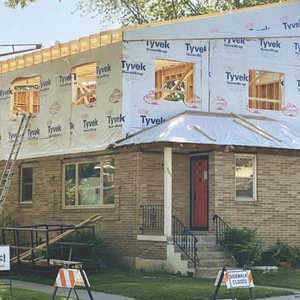
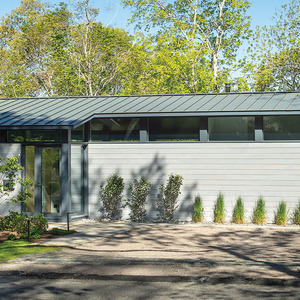



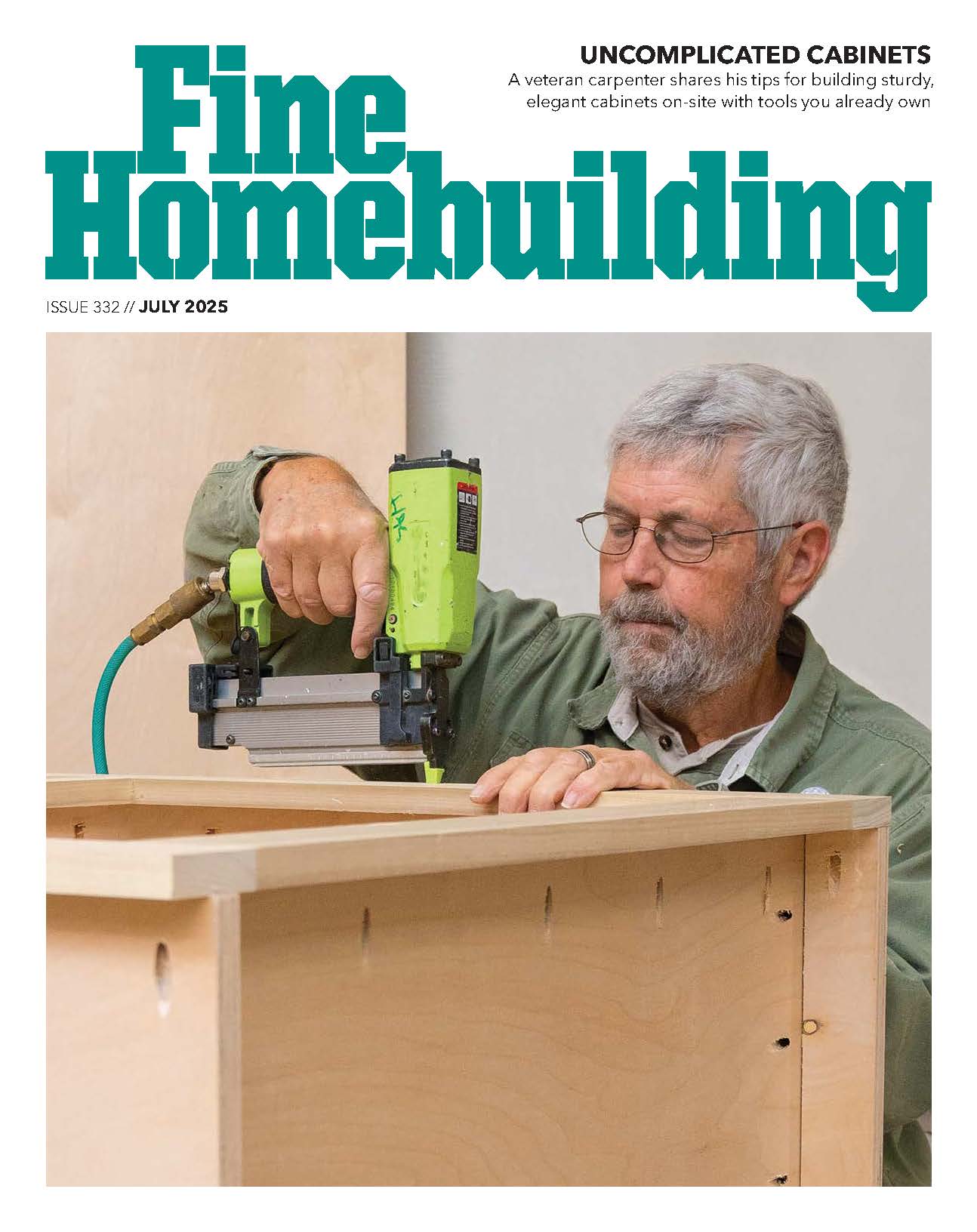
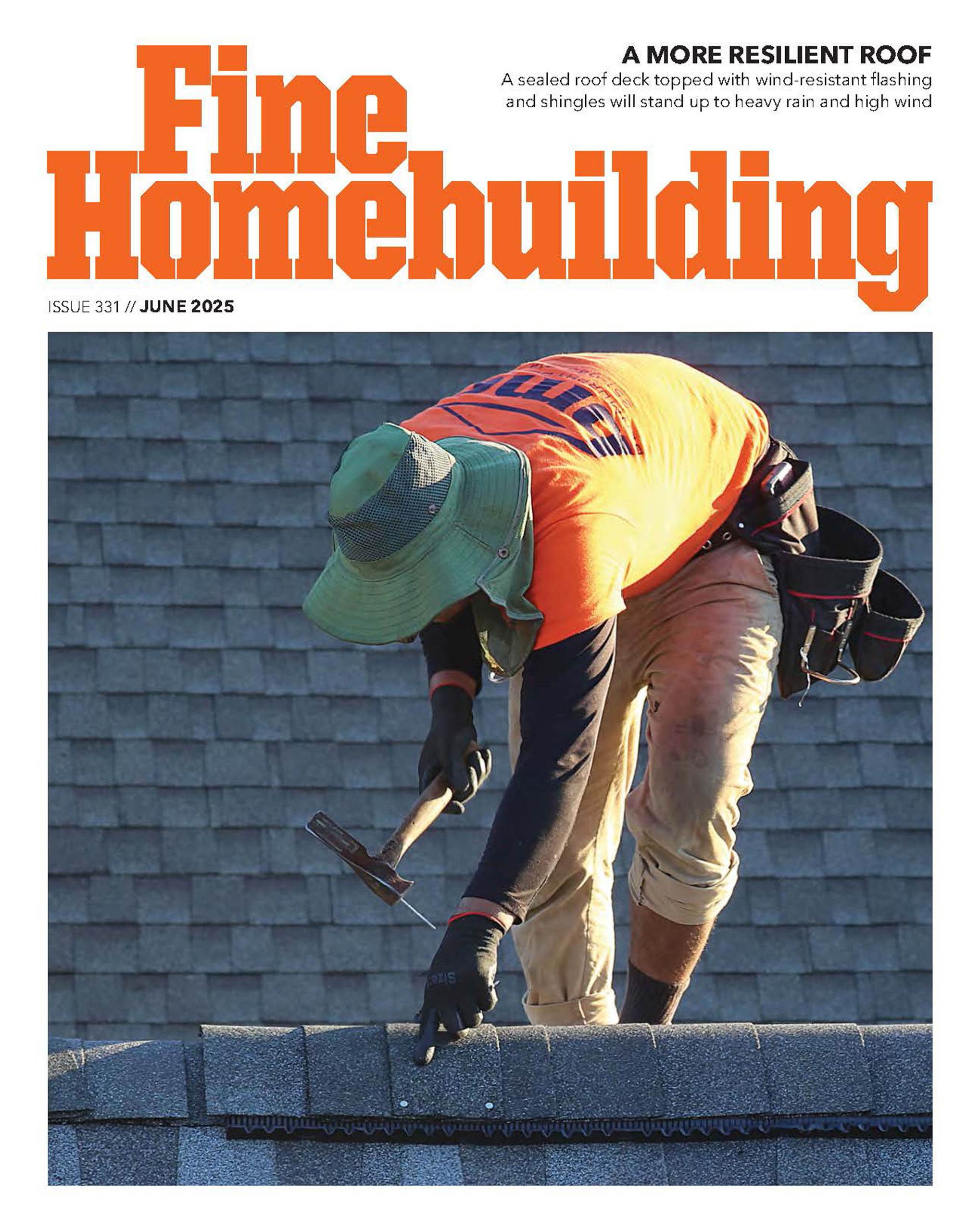








Replies
MDF of particleboard. The ply has voids, unless you use the more expensive cabinet grade, which would be pointless. The voids don't much matter in the field, but they do on the edge. Your trimmer hits a bump and you just blew it.
I wouldn't go less than the 3/4" stock. It will give you more stability, and 1 1/2" edge thickness is pretty customary. As to joining the pieces, rip it in half for your 22 or 24" width, and now you've got two 8' pieces for a 10' hole. Overlay them, scribe them, and when they fit, one on top of the other, zip them together with a couple of DW screws and make sure you can lift the thing in and out without chewing up the walls. That done, fill in your ends - you've to 2 ft to add to opposite ends of each side.
Use a router with a flush trim bit to follow the pattern you just made. Decide which is bottom and mark it. Laminate your edges, then your top. If the sitting space is 3' or less, a cleat on the wall should be sufficient. It's no different than spanning kitchen appliances like a dishwasher. If it's wider or you're going to put a lot of weight on it, consider a shelf bracket at the rear or a secondary filler piece at the face, like the aprons on a table, to help support the weight.
Not sure what you mean by color matched edges. Use laminate or trim the edge with wood and finish it.
"The child is grown / The dream is gone / And I have become / Comfortably numb " lyrics by Roger Waters
Ok I'll try.... Having made a couple of thousand tops I got a little experience.
First if there is no water involved go to a local cabinet or top shop and get 25" deep particle board.
No need to support for 24" span. all dishwashers are 24" wide and rarely supported.
If there is a splash going on the top ditch the template. make the top 1/2" short and make end splashes.
As for edges matching lam I have no idea what you mean.
Hope this helps
___________________________________________________________________
use particleboard,25"x 121"--plam supply will stock this
i like 3/4 AC ply.... rip it in half... splice your pieces with a splice block of 3/4 ply some place where it won't show...
use a 3/4 x 1.5" pine edge nailed and glued... glue up your edges... rout them flush to the top but shy of flush.... finish the top edge by hand
make up your template and then cut your top a little large to hand scribe it..
use spacers to keep the glued pieces from sticking.... use lots of spacers..
when you have it just where you want it.. start pulling your spacers... trim the front edge with a router bevel bit.. but again... leave it shy.. and finish by hand
Mike Smith Rhode Island : Design / Build / Repair / Restore
i laminate lots of tops a year and i always use 11/16 particle board for the substrate
i always join sections of pb with a few biscuits and a couple of countertop drawbolts to pull the pieces together
edge treatment? bunch of options really
most of my tops are made with 1x2 maple or oak around the edges and cut after lamination with a 45 bevel router bit, other option is laminate the edge and file the edge after laminating
i know there is an article in the archives on building laminate tops but they dont describe the bevel procedure
if you would like more details, let me know
[email protected]
steve
"caulking is not a piece of trim" zach gaulkin 1998 in memorium
If you have concerns abiout strength, especially spanning the knee space, first put down a layer of 3/4 ply and then overlay with mdf. That way you'll get the smooth mdf for the laminate and the strength of ply. Plus you don't need to be as exacting on cutting the ply to fit, 'cause it won't show. As long as the joints in the ply and mdf don't line up, you'll be fine; put an 8 ft piece of ply centered on the kneespace, fillers on the ends, then start the mdf against one wall. You would still do good to have a cleat along the wall at the kneespace to help keep the top from sagging.
edging that color-matches laminates Any decent laminate shop will have edging that comes in the same colors and profiles as the main sheet. If you're looking at HD or Lowes, then their selection is very limited.
Do it right, or do it twice.
E,
We did the same thing in one of our spare bedrooms. Made it into a Sewing / project / computer room. I went to the "dreaded" Home Depot and bought a prefinished countertop. It is premolded complete with backsplash and is very sturdy. It was available in several colors (we went with white) and up to at least 10' long, maybe even twelve. We have it spanning a 4ft knee space in the cabinets and it has not sagged a bit in 5 years since I did it.
Hope this helps,
Bill
Thanks, everybody - this was really helpful.
3/4" med density pb counter blank, built up front/back/ends for the 1 1/2" thickness. (ply and such for a lam top?)
Scribe your blank left and right, glue and tack the build ups, and lam it. If you have a long wall on one side of the top you can shim it away for the drop in, walls have some flex. If you are closed in by 2 corners you can shim the walls out for the space you need, by beltsanding the leading edges off. You don't need a lot of space for a ten ft top, and I have dropped postforms into less.
For your edging; if you are thinking of the bevel, I have all of the toys, but I leave those for the pros. Actually, I prefer to not make any top, unless I have to, and the last thing I need to do is hose a top at the last minute to save a buck. Self edge, or wood edge is easy enough, you have major wiggle room.
Paticle board or MDF for the substrate.....you can get it as long as you need, never seen it 25" wide but 30" x 12' is common (those are the blans the prefab coutertop peple use.....25" deep deck, plus buildup, plus backsplash).....do not use plywood (Mike...sheesh).....plywood is specifically NOT allowed by every laminate manufacturer I know of, and is specifically NOT allowed under the AWI/AWMAC (commercial cabinetry) quality standards manual. It can and sometimes will 'throw' a piece of laminate off as the wood moves.
You can go with a 5' x 12' piece of laminate, so there are no seams, but those sheets are fairly expensive....another option MAY be....you decide how much wear it is going to get....is a 30" x 12' piece of post-form grade laminate. The difference here is about $115 Cdn to $25 or something, and it is still a pretty sturdy piece of laminate. Or you can get a prefabbed top for not a lot of money, as suggested....either install as is or rip off the backsplash.cabinetmaker/college woodworking instructor. Cape Breton, N.S
but, adrian... i hate particle board....
3/4 AC has been my gold standard for 30 years...sheeessshhhhhhMike Smith Rhode Island : Design / Build / Repair / Restore
(ahem)....Mike: gawd knows I love ya, but if I may quote from the bible for a moment (the bible in this case being the 8th edition of the Architectural Woodwork Quality Standards Manual Illustrated, the joint standards manual for the AWI (Architectural Woodwork Institute (U.S) and AWMAC (the Canadian version)....a joint standard covering commerical and architectural woodwork in all of north America except California, hot off the presses.....the ONLY substrates or cores permitted in any of the three grades is medium density particle board or medium density fibreboard.
AWMAC used to allow 'poplar, spruce and/or birch plwood' as a third choice, for countertops only (not for other plastic laminate in general); now the unified standard doesn't even have that loophole.
Anyone with an interest in quality cabinetry and millwork, even if you work in residential where these standards may not be applied (but many architects do use them in both), or even if you are buying or speccing cabinets and millwork,would benefit by having this manual. It's the reference, and it has a lot of good technical info and illustrations in it. It's a bargain. http://www.awinet.org/Publications/index.asp
cabinetmaker/college woodworking instructor. Cape Breton, N.S
Marine grade ply, which has no voids, is accepted and used by high end laminators, high density 30" x 12' particle board is the norm. Mike I stopped using AC grade when the APA went from 4 footballs per face to 8 they're up to 12 maybe 16 now how many in the plys is the kicker sheeesh to the APA not you.
Edited 7/5/2003 11:20:08 PM ET by GUNN308
Did the same kind of project a couple of years ago. We turned a bedroom into a study with cabinets for files on the sides, and a cab for the printer in the middle. Two work stations with the computer in the middle on top of the counter.
I built the cabs, then went to a local countertop manufacturer, and had a "post formed" top made. You can get a lot of different styles for the front edge.
I just made a template out of a couple pieces of 1/4" MDF (spliced) and took it to the shop. No sweat.
We also put 1/2" AC birch behind the counter and painted it the same color as the walls. It's tougher, and you can put things up with screws rather than anchors.
Getting it in was a pain, but it fit pretty close. Made some low backsplash out of 1/2" BB ply to hide any gaps.
Corian guy I watched make a template once used stips of 1/4" luan about two inches wide to make his template. He scribed a strip to each wall and set them in place, and set one where the front edge needed to be. Then he hot-glued the whole she-bang together and went back to the shop. Came back in a week with a perfect fitting top.
Steve
As you can see there are many ways to skin the same cat. I would go with ¾ particle board as my substrate. Even though there are “special” grades of PB for countertops, the stuff you can buy in the local home center will serve the purpose.
If you can get your hands on a 10’ sheet that would be great, but if you can’t it’s not hard to join two pieces to make up what you need.
Here are some pictures of how you can work with PB to achieve the “shape” you need. Sanding is a good idea as well once you are done gluing the pieces together.
joe
i fabricate a lot of countertops too, we should compare notes
how do you join large sections together? before or after laminating? or both depending on the situation?
ive done both using a combination of biscuits and countertop bolts(draw bolts, miter bolts what ever)
largest i ever did in one piece was a 11' 9" with two 5' legs, no laminate seams but a couple in the substrate
largest top with seams was 17' with an 8' leg and a 5' leg on the other end, did that with one seam after laminating
steve
caulking is not a piece of trim
Steve,
First, I don’t fabricate a lot of tops. I usually do them when I absolutely must, which is becoming less and less.
I join sections based on the largest sheet (12 x 5) I can get and the layout of the top. I join all the sections with biscuits and lap the bottom build up over the joints. I scrape and sand all the joins as well. I only use draw bolts when I need to “connect” two counters together.
View Image